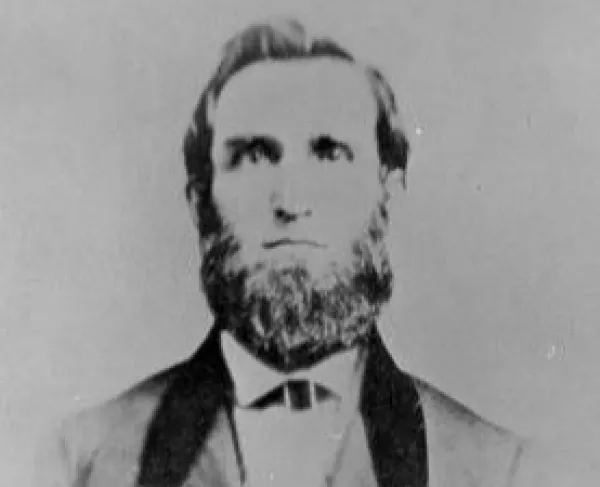James J. Andrews

James J. Andrews, a contraband merchant, trader, and Union spy, is best known for leading a group of raiders in the Great Locomotive Chase of April 1862 to cut off Confederate railroad communications near Chattanooga, Tennessee. During the Civil War, the railroad played a vital role in connecting cities like Atlanta, Chattanooga, Charleston, New Orleans, Mobile, and Montgomery, and it was crucial for the Union to break off any chance the Confederacy had to easily transport supplies and men between these cities. While Andrews and his men had the goal of destroying the Western and Atlantic Railroad, they stopped short of achieving their objective. Andrews and his men were captured by Confederate forces and were executed. Spies like Andrews played an essential role in gathering intelligence and launching risky missions to weaken the enemy, but Andrews’ story exemplifies the dangers spies faced during this period.
In 1829, James Andrews was born in Holiday’s Cove, Virginia. Not much is known about his early life, but before the Civil War, he worked as a house painter and taught music in Flemingsburg, Kentucky. However, once the war broke out, Andrews enlisted began his work as a civilian spy for the Union. During this time, he was also newly engaged to Elizabeth Layton, but the two never married. He disguised himself as a merchant, and in this role, he supplied contraband and provided false military intelligence to the Confederates. He also frequently went into enemy territory and provided supplies to contacts in the Confederacy, while also gathering crucial information on Confederate military strategy.
General Don Carlos Buell enlisted Andrews as a spy in the Fort Donelson campaign in early 1862. In March 1862, General Buell authorized a plan for Andrews and his men to steal a bridge from Atlanta and to burn a bridge along the Tennessee River. However, this plan was a massive failure as they lacked assistance from an engineer.
By the time Andrew’s mission failed, General Buell had advanced his forces toward Shiloh. However, Brigadier General Ormsby M. Mitchel set up his men in Shelbyville and sought to capture Chattanooga. Andrews presented a plan to Brigadier General Mitchel to steal a train and to destroy the bridges on both the Georgia State Railroad and the East Tennessee Railroad. Once he accomplished this, Chattanooga could be divided from the rest of the Confederacy leaving no way for supplies to be transported. Andrews and another civilian, William “Bill” Campbell, recruited twenty-two volunteers from three Ohio infantry regiments to stage a second raid on Confederate rail lines. On April 12, 1862, Andrews and his men arrived in Marietta, Georgia while wearing civilian clothing and boarded a train. They captured that locomotive called The General near Kennesaw, Georgia, and they were chased for approximately 80 miles. However, the train ran out of water and wood, and Andrews and his men were captured.
The Confederates court-martialed Andrews in Chattanooga, and there, he was held in Swims Jail. He was sentenced to death along with seven other men that were involved in the raid. All of them were convicted for “unlawful acts of belligerency” for their crimes as spies and combatants. Andrews attempted to escape jail, but he was captured. He was taken to Atlanta and hanged on June 7, 1862. In addition to Andrews, seven of the other raiders were also executed.
On March 25, 1863, six of the raiders were awarded the first ever Congressional Medals of Honor. Eventually, most of the raiders received—sometimes posthumously—Medals of Honor, but Andrews did not receive a medal as he was a civilian, and medals could only be presented to soldiers. Today, Chattanooga stands as the site of where the Congressional Medal of Honor was born.
Andrews was temporarily buried where he was hanged, and his fiancee was distraught by his death, dying almost two years later. In October 1887, Andrews’ body was moved to the Chattanooga National Cemetery to be buried. Today, a gravestone and a monument to those involved in the raid stands at Chattanooga National Cemetery. Also, a State of Georgia Marker stands in the city of Atlanta commemorating the site Andrews was hung.
James J. Andrews took significant risks as he led the raid on Confederate railroads and supply lines. His capture and execution emphasize the danger of espionage during the Civil war and also his extraordinary bravery as a civilian spy for the Union cause.





